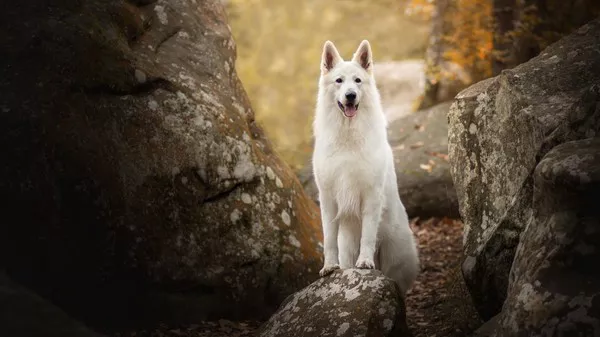Norwegian Forest Cats, often affectionately called “Wegies,” are a strikingly beautiful breed known for their majestic appearance and thick, waterproof coats. They are popular for their friendly personalities and adaptability, but how do they fare when it comes to intelligence? In this article, we will delve into the various aspects of Norwegian Forest Cats’ cognitive abilities, explore how their intelligence manifests in their behavior, and compare their smarts to other cat breeds.
Understanding Norwegian Forest Cat Intelligence
Before evaluating Norwegian Forest Cats specifically, it is crucial to understand what we mean by “intelligence” in cats. Intelligence in felines encompasses a range of abilities, including problem-solving skills, social interaction, memory, and the capacity to learn from their environment. Unlike dogs, whose intelligence is often assessed through obedience and complex tasks, feline intelligence is more subtle and less straightforward.
Types of Intelligence in Cats
Problem-Solving Skills: This includes the ability to navigate obstacles, open doors, or retrieve hidden objects.
Social Intelligence: Cats with high social intelligence can effectively interact with humans and other animals, displaying empathy and understanding social cues.
Memory: Long-term and short-term memory are important for recognizing people, places, and routines.
Learning Ability: This encompasses the capacity to learn through observation, repetition, and interaction.
Norwegian Forest Cats: An Overview
The Norwegian Forest Cat is an ancient breed that originated in Norway. They are characterized by their robust build, large size, and thick, double-layered coat that is well-suited to harsh Scandinavian climates. These cats are generally friendly, affectionate, and adaptable, often forming strong bonds with their human companions. But how does their intelligence align with these traits?
Historical Background
The Norwegian Forest Cat has a long history, with its roots believed to trace back to the Vikings or even earlier. According to legend, these cats were favored by Norse goddesses and were integral to Viking ships, protecting the crew from mice and other vermin. Their natural skills and survival instincts likely contributed to their reputation as intelligent creatures.
Physical Traits and Intelligence
The physical traits of Norwegian Forest Cats, such as their large size, strong muscles, and thick fur, contribute to their overall behavior and intelligence. Their robust physicality enables them to explore their environment effectively and engage in activities that stimulate their cognitive functions.
Cognitive Abilities of Norwegian Forest Cats
Problem-Solving Skills
Norwegian Forest Cats are known for their resourcefulness and curiosity. They have an inherent ability to solve problems and adapt to new situations. This can be observed in several ways:
Exploration and Navigation: Wegies are natural explorers. They are often seen investigating new areas of their homes or outdoor spaces. Their ability to navigate complex environments demonstrates their problem-solving skills.
Interactive Toys: Norwegian Forest Cats frequently engage with interactive toys that challenge their minds. Puzzle toys that dispense treats when solved are particularly appealing to them, as they enjoy the mental stimulation and reward.
Social Intelligence
Norwegian Forest Cats exhibit a high level of social intelligence, which is evident in their interactions with humans and other pets. They are generally affectionate and form strong bonds with their owners. Key aspects of their social intelligence include:
Understanding Human Emotions: Many Norwegian Forest Cats seem to recognize and respond to their owners’ emotions. They may offer comfort when their human companions are upset or show excitement when their owners return home.
Interaction with Other Pets: Wegies are usually good with other pets, including dogs and other cats. Their ability to coexist and form friendships with different species highlights their social adaptability and intelligence.
Memory and Learning
Memory plays a significant role in a cat’s behavior and intelligence. Norwegian Forest Cats have strong memory skills, which are evident in several ways:
Recognition of People and Places: Wegies can remember and recognize their owners, familiar places, and routines. They often greet their owners at the door and may exhibit excitement when they see familiar people.
Learning Through Observation: These cats can learn by observing their surroundings. For example, they might watch their owners perform certain tasks and then attempt to mimic those actions.
Comparing Intelligence with Other Cat Breeds
To gauge how Norwegian Forest Cats measure up in terms of intelligence, it’s helpful to compare them with other breeds known for their cognitive abilities.
Abyssinian Cats: Abyssinians are renowned for their high energy levels and problem-solving skills. They are often considered one of the most intelligent cat breeds due to their curiosity and quick learning.
Siamese Cats: Siamese cats are known for their vocal nature and social intelligence. They are highly trainable and can learn a variety of commands and tricks, often demonstrating a high level of cognitive function.
Maine Coon Cats: Similar to Norwegian Forest Cats, Maine Coons are large, intelligent, and friendly. They are known for their problem-solving skills and adaptability.
While each breed has its unique strengths, Norwegian Forest Cats exhibit a well-rounded intelligence that includes problem-solving, social interaction, and memory. Their intelligence is often expressed through their adaptability and ability to engage with their environment and human companions effectively.
Training and Enrichment for Norwegian Forest Cats
To fully harness and stimulate the intelligence of Norwegian Forest Cats, it’s essential to provide them with appropriate training and enrichment opportunities.
See Also: What Are the Markings of a Norwegian Forest Cat?
Training Techniques
Positive Reinforcement: Using treats and praise to reward desired behaviors is an effective training method. Norwegian Forest Cats respond well to positive reinforcement, making it easier to teach them tricks and commands.
Consistency: Regular practice and consistency are key to successful training. Establishing a routine and being consistent with commands and rewards will help your Wegie learn more effectively.
Enrichment Activities
Interactive Toys: Provide a variety of toys that challenge your cat’s problem-solving skills. Toys that dispense treats or require manipulation can keep their minds engaged.
Environmental Enrichment: Create an enriching environment by incorporating climbing structures, scratching posts, and puzzle feeders. This will stimulate their natural instincts and keep them mentally and physically active.
Social Interaction: Spend quality time interacting with your Norwegian Forest Cat. Engage in play sessions, provide affectionate interactions, and offer opportunities for exploration and discovery.
Health and Well-Being
A healthy and well-balanced lifestyle is crucial for maintaining the cognitive function and overall well-being of Norwegian Forest Cats. Regular veterinary check-ups, a balanced diet, and appropriate exercise are essential components of their care.
Diet and Nutrition
Balanced Diet: Ensure your cat receives a balanced diet that meets their nutritional needs. A diet rich in essential nutrients supports brain health and overall vitality.
Hydration: Adequate hydration is crucial for maintaining cognitive function. Provide fresh water at all times and consider incorporating wet food into their diet to promote hydration.
Exercise and Activity
Regular Playtime: Engage your Norwegian Forest Cat in regular play sessions to keep them physically and mentally active. Interactive play helps prevent boredom and promotes cognitive stimulation.
Outdoor Exploration: If possible, provide opportunities for supervised outdoor exploration. This allows them to engage with a natural environment and stimulates their senses.
Conclusion
In summary, Norwegian Forest Cats exhibit a notable level of intelligence characterized by their problem-solving skills, social interaction, and memory. Their adaptability and ability to learn from their environment make them an engaging and intelligent breed. While they may not always display their intelligence in the same ways as some other breeds, their cognitive abilities are evident in their behavior, interactions, and overall adaptability.
By understanding and nurturing their intelligence, you can provide your Norwegian Forest Cat with a fulfilling and enriched life. Whether through interactive toys, training, or environmental enrichment, recognizing and supporting their cognitive needs will contribute to their well-being and strengthen the bond between you and your feline companion.
Related Topics:
























